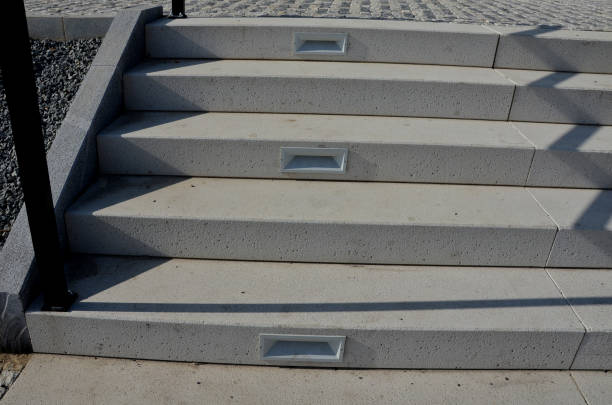Tiles with anti-skid and sturdy surfaces are required for steps, stairways, and footpaths. These features not only ensure that the floor looks good but will also keep it safe for users.
The floor and step tiles are ideal for high-traffic areas. Vitrified tiles have several properties that make them suitable for areas with high traffic. They are hard on the surface, strong in the body, and offer anti-skid qualities.
You can choose different types of vitrified tiles for other areas. You must base your choices on the tile characteristics and traffic type and amount.
There are many types of vitrified tiles.
Choose from a wide range of vitrified tiles. Five different types of tiles can be used to tile floors in various areas.
Full-body vitrified tile (FBVT)
Full-body vitrified tile is a homogeneous block of tiles with color pigments permeating throughout the body. The design and color patterns of the tile will not be altered if you break it from any angle. The tiles are similar to granite and other natural stones in their structure. They can withstand outdoor elements and retain their shape and form without any change.
Double-charged Vitrified Tile
DCVTs have a dual-toned surface, where the colors are directly infused on the tile. Directly infused color forms a layer of 3-4mm pigment on the top of the tiles. The color pigments give the tile a marble-like appearance and durability but without the stone’s permeability.
Soluble Salt Vitrified Tile (SSVT)
Using soluble salts, the tiles are fired before the salts are applied. The firing process creates patterns in various colors, which are then infused into the surface of the tile and, to a certain extent, the body. These tiles are the least costly of all five vitrified tiles.
Glazed Vitrified Tile (GVT)
The most beautiful surface designs are found on glazed vitrified tiles. The tiles are coated with a hard glaze and have unique digitally printed patterns on top. You can create elegant and unique wall and floor decor with GVTs in your home or office.
Polished Vitrified tile (PVT or PPGVT)
All vitrified tiles, including soluble-salt vitrified tiles, can be polished. H&R Johnson waxes PGVTs in two ways: surface polishing to achieve a shiny finish and nano polishing to seal the micropores.
SSVTs, FBVTs, and SSVTs are typically nano-polished. Nano polish is used to cover the pores of FBVTs. This makes them stain-resistant. For SSVTs, the polish increases the durability of their surface.
DCVTs and GVTS are polished for a mirror-like shine. This adds elegance to the already stunning prints.
Vitrified tiles for steps & high-traffic areas
For high-traffic areas, vitrified tiles are recommended. High-traffic zones include parking lots, pedestrian crossings, bus and railway stations, shopping malls, retail shops, workshops, and other similar areas.
Here are some of the characteristics that make vitrified tiles a great choice for high-traffic areas and stairs:
Sturdier Surface Quality
It is important to consider the appearance of the tile’s surface when selecting it for a building or home. You would like the surface design of the tile to last a long period. Here, vitrified tiles are a hero.
This chart shows the recommended tile types and their placement based on surface durability and quality.
Strengthening the body mechanically
The density and mechanical strength of vitrified tiles can vary according to the requirements. The vitrification process creates a strong and homogenous structure for the tile base. The tile has a high mechanical strength as well as a weight-bearing capability.
Install FBVTs 12-20mm thick with a fully adhesive base. These tiles can be made to be stronger than natural stones, such as granite.
Resistant to moisture
The tiles are not porous and will not absorb water. Unpolished vitrified tile surfaces have small pores that can cause them to stain. For areas where there is a chance of moisture, only polished vitrified tile should be used.
The pores are filled, and the tiles have a stain-free surface.
Frost Resistance
The tiles are resistant to thermal shocks, including thawing. You can, therefore, use these tiles both in hot and cold areas. DCVTs and FBVTs do not lose surface quality when exposed to fire.
Colour Stability
All vitrified tiles except for the unpolished tiles containing soluble salts have a stable colour. These tiles will not fade in the sun or other elements if they are installed in an area that is exposed to them.
Resistant to fungal Growth
Vitrified tiles are resistant to bacterial and fungal growth due to their non-porous nature. You can use these tiles to create hygienic surfaces in any area.
H&R Johnson offers Vitrified Step Tiles
The best tiles for stairs and steps are vitrified tiles. Fully vitrified tiles with a thickness of 10-12mm are strong and durable, and they have a consistent structure. The uniformity of the tiles allows them to maintain their appearance even after long-term use.
H&R Johnson provides full-body vitrified tile for staircase applications. The tiles have a durable surface and a solid body that will not be damaged by heavy footfall. Johnson’s Step Stone Tiles feature rounded edges and tread lines and are ready to install.
These tiles come with high thicknesses and matching risers, which are perfect for stairs in public areas. The pre-cut tiles can be purchased and installed in place, with minor adjustments as needed.

